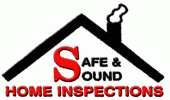Radon Inspection
Radon Inspection
Radon is a radioactive gas that forms naturally when uranium, thorium, or radium, which are radioactive metals break down in rocks, soil and groundwater. People are primarily exposed to radon from breathing radon in air that seeps through cracks and gaps in buildings and homes. Because radon comes naturally from the earth, people are always exposed to it.
However, there are some areas of the state where levels are higher than others. The metro Atlanta area is one of the those areas. See the EPA’s map below.
If you’re preparing to purchase a home or are already living in one, then you might want to consider having the property tested for radon. This will let you know what levels are present in your home.
Our tests are conducted using state of the art electronic Continuous Radon Monitoring (CRM) devices. that are set up in the home for a minimum of 48 hours to measure the radon levels that are present in the home at the time of the testing.


What happens if my results come back high?
If your results come back high, then you should contact a radon mitigation company to quote you a price for installation of a mitigation system.
Can I test for radon on my own?
The short answer is yes. But most DIY setups don’t provide you with hourly data that shows you how the levels are fluctuating. Also, you have to make sure that you set the test machine up properly, in an ideal location that won’t negatively impact the results.
What if my results are low?
My neighbor had high radon levels, should I be concerned
You should always be concerned about radon in your home whether the neighbors results or high or low. This is because radon levels fluctate all the time and the radon levels below your home are slightly different than your neighbors.
How do you remove radon from your home?
Radon is lowered in homes by installing a radon mitigation system. This system includes sealing any visible cracks in the foundation and framing along with installing a draft fan on PVC piping that goes below the slab and sucks the gases up and out of the home.
What are the signs that radon is in your home?
There are no real signs of radon. Radon has no color or smell. That makes it undetectable by human senses. The most unfortunate indicator of high radon levels might be if a loved one that lives in the home develops lung cancer.
Which houses are most at risk for radon?
Any home may have a presence of radon. This includes brand new and older homes, well-sealed and drafty homes, and homes with or without basements. Radon seeps into the home through microcracks in slabs and openings in the framing of the home.
Is radon a problem in the metro Atlanta area?
Radon kills 22,000 people each year in the U.S. 800 of those deaths will be in the state of Georgia.
What season is radon worse?
Indoor radon levels are normally at the highest in the winter or colder months because of the thermal stack effect, a snowy barrier, and tightly sealed homes. Cold temperatures increase the pressure within the home, meaning more air is being pulled in from the ground, which elevates the risk of radon entering the home. This is why January is Radon Awareness month
Why are northern GA and Metro Atlanta hotspots for radon?
Radon gas is more common in northern Georgia because of geology and soil composition. Most uranium in Georgia is found in this region, especially in the Metro Atlanta area.
Does covering your floor with carpet reduce radon levels?
Covering floors with carpet, tile, vinyl or wood planks DOES NOT prevent radon gases from entering your home. Remember that several inches of concrete cannot stop radon. Some contractors believe that the plastic vapor barrier below your slab will stop radon. Although the vapor barrier is part of the “radon-resistant” construction, it merely reduces the flow of soil gas. It does not stop it from entering the home!
How reliable are 48 hour test results?
Short-term CRMs continuous radon monitors (2 to 7 days) provide an hourly snapshot and overal average of the fluctuating levels of radon in the home. Radon levels are always in flux.
How much does radon mitigation cost?
Radon mitigation costs between $1000-2500 on average. The cost is based on the size of the home and the layout of the floorplan and foundation.
How long do radon mitigation systems last?
The fan is the most mechanical part of the mitigation system. Most fans have a 5 year warranty. After that you might consider having your radon mitigation fan replaced? The pipes should last well over 30-40 years.
How much are radon mitigation fan replacements?
They can range from $150- $250+ depending on the make and model.
Should I have my home tested after having a mitigation system installed?
Yes! Most mitigation companies require a third party test to ensure that the radon levels are low.
Congratulations
You have been Connected with Atlanta’s premier home inspection.
